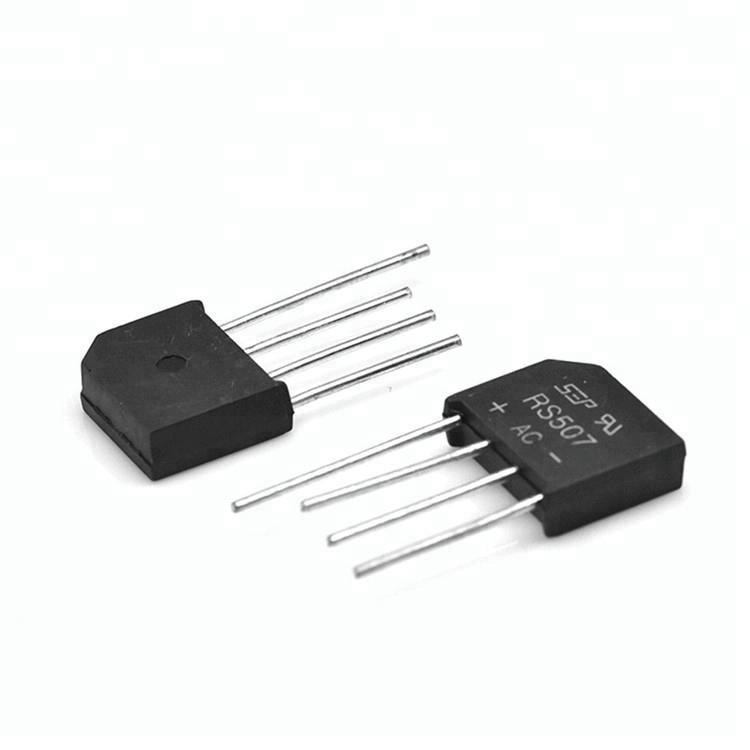How Does a Rectifier Diode Conduct?
In the realm of electronics, the rectifier diode plays a pivotal role in converting alternating current (AC) into direct current (DC). Understanding how this device conducts electricity is essential for anyone delving into the complexities of electrical circuits and systems.
The Basic Principles
A rectifier diode is a semiconductor device that conducts electricity in one direction only. This unidirectional conductivity is achieved through the unique properties of the semiconductor material used in its construction. When a voltage is applied across the diode, electrons flow in one direction, while in the reverse direction, the flow is blocked.

The Forward Bias Condition
When a positive voltage is applied to the anode (or P-type material) of the diode and a negative voltage to the cathode (or N-type material), the diode is said to be in the forward bias condition. In this state, the electrons in the N-type material are attracted towards the positive terminal, while the holes in the P-type material move towards the negative terminal. This creates a narrow region at the junction between the two materials called the depletion region, which reduces as the forward voltage increases.
Related links:How Does a Fast Recovery Rectifier Work?
Unlocking the Secrets of 30SQ045 Technology
2024 Guide to OEM Protection Diode Innovations
Boost Your Circuit: Metal Oxide Resistor Efficiency Explained
What is a Small Signal Schottky Diode and Its Uses?
Fast Recovery Diode DC Rectification: Essential Guide 2024
Are You Aware of Small Signal Diode Reliability in Your Applications?
As the forward voltage reaches a certain threshold, known as the forward voltage drop, the depletion region becomes thin enough to allow a significant current to flow through the diode. The electrons in the N-type material are now able to cross the junction and recombine with the holes in the P-type material, resulting in a current flow from the anode to the cathode.
The Reverse Bias Condition
On the other hand, when a negative voltage is applied to the anode and a positive voltage to the cathode, the diode is in the reverse bias condition. In this state, the depletion region widens, further impeding the flow of electrons across the junction. As a result, the current flow is negligible in the reverse direction, and the diode effectively blocks the current.
The Role of Temperature
It's worth noting that the conductivity of a rectifier diode is also influenced by temperature. As the temperature increases, the number of free electrons and holes in the semiconductor material increases, leading to an increase in the current flow through the diode. However, this increase in current is typically small and does not significantly affect the overall operation of the rectifier.
Conclusion
In summary, a rectifier diode conducts electricity in the forward direction when a sufficient forward voltage is applied across its terminals. In the reverse direction, the diode blocks the current flow due to the widening of the depletion region at the junction. This unidirectional conductivity is the key feature that enables the diode to convert AC into DC in rectifier circuits.
Top 5 Diode Suppliers: Find Reliable Sources for Your Needs
7 Essential Benefits of Using ESD Protection Diodes in Electronic Circuits
Fast Recovery Diodes: Boost Efficiency and Reduce Power Loss
Understanding Fast Recovery Diodes: Key Applications and Benefits
How Can a Custom Schottky Diode Supplier Enhance Your Consumer Electronics?
Why Should You Choose Custom Schottky Rectifiers?
Key Considerations When Choosing Low Voltage MOSFETs



